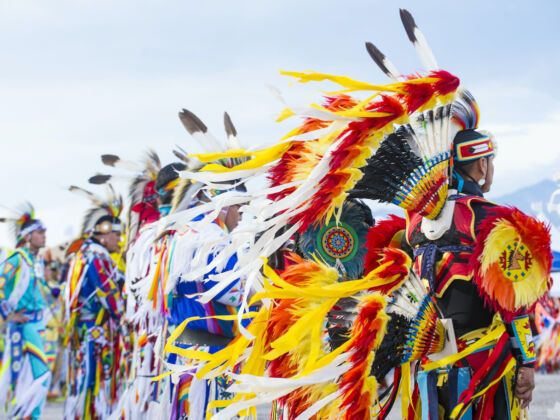Thanksgiving has a couple of faces. There’s the kindergarten through high school public school take on the matter: sharing a meal; dressing like pilgrims; and tracing hands to put beaks and feet on, Thanksgiving memorabilia for your fridge. And then there’s the Facebook-meme level, the “I’m going to invite my neighbors in for a meal, and then kill them” — a sardonic, let’s not celebrate this massacre and subsequent loss of culture message that takes less than a second to disseminate.


For many, the “First Thanksgiving,” a celebration of the Pilgrims’ survival, and a sharing of late autumn harvest bounty, also represents an important stage in decimation of most of the indigenous peoples across the continent. One such group is the Cherokee people of North America, who lost more than a quarter of their number in the 1830s Trail of Tears, a forced relocation project.
There are now about 300,000 Cherokee Nation Members, which represents most, but not all, Cherokee. Most Cherokee reside in Oklahoma and North Carolina. While the nation has strong traditions, a museum, and a monthly English-language online newspaper, use of their indigenous language has fallen in recent years. Several organizations, including the Cherokee themselves, have introduced efforts to revitalize the language. But the most recent push came from a fairly unexpected place.
A happenstance meeting of the minds has led to Google introducing Cherokee as the 57th language in which Gmail is available, beginning this week.
One of the main elements of cultural identity is a shared language. According to National Geographic, every 14 days, another indigenous language dies. With the language death, history and stories are lost, as well as important cultural markers. 1
A confluence of factors — including: the Trail of Tears; forced education of Native American children in English-only boarding schools; and US governmental policies that led to nearly five times the number of indigenous children being removed from their homes as compared to non-indigenous children until recently — have pushed many indigenous North American languages into decline.
In 1978, the US government passed the Indian Child Welfare Act which was aimed at stopping these practices and prioritizing keeping indigenous children with their tribe. But much linguistic and cultural damage was already done. 2
In recent times, the process by which a language dies is slow, but seems inexorable. The language fades from use at home, is not reinforced in school, and slowly, the fluent speakers age, and eventually die. Factors leading to lack of home use have to do with being a cultural minority, and the prestige (or lack thereof) associated with bilingualism, or the language itself. Adults choose not to speak, and children opt not to learn what they perceive as “low-prestige languages,” preferring “high-prestige languages” — in this case, English.
Cherokee (better spelled Tsalagi) is one indigenous language whose speakers are trying to reverse the trend. A 2002 survey conducted by the Cherokee found that no one under 40 spoke the language — which is the only remaining language of the Southern Iroquois language — conversationally. 3 The language now has about 22,000 speakers, a small percentage of the total population.
In 2008, Western Carolina University started partnering with the Eastern Band of Cherokee to develop an educational curriculum for Cherokee immersion classes. 4 Grade-school classes in Cherokee began on a small scale starting in the 2009-2010 academic year, and continue to grow. Adult education classes in language and culture take place at cultural centers, museums, and schools in Oklahoma and North Carolina.
How did Google get involved?
It all happened by accident, a shared ride between Craig Cornelius — a Google engineer — and Vance Blackfox — a member of the Cherokee Nation — on their way back from an event. Cornelius was working on “internationalization of Google products,” and talking with Blackfox set a series of events in motion, which later led to Google Web Search in Cherokee, and eventually to Gmail in Cherokee, facilitated by the Google-created Cherokee virtual keyboard, which allows users to type using the 85-symbol Cherokee (also called Sequoyah) syllabary.
The transition to developing Gmail in Cherokee had to be helped along, with Cherokee speakers having to supply words for many tech-specific terms, including “inbox” and “spam.” Tsalagi / Cherokee is now the 57th language supported by Gmail. One of the others is Welsh, which has its own language revitalization story, with numbers of speakers rising since the beginning of compulsory Welsh education in schools starting in 2000.
What does the inclusion of a Gmail option in Cherokee mean for the Cherokee people?
The linguist David Crystal, in his book Language Death, identifies six factors for language revitalization, which is the opposite of language death. These include prestige, gaining wealth and power, the language’s presence in the educational setting, a writing system, and lastly, the ability to use it to access electronic technology. With this latest innovation supported by Google, Cherokee / Tsalagi has stronger footing on the technology front. 1travel.nationalgeographic.com
2 For a UN report on ICWA, read this.
3www.cherokee.org
4www.wcu.edu